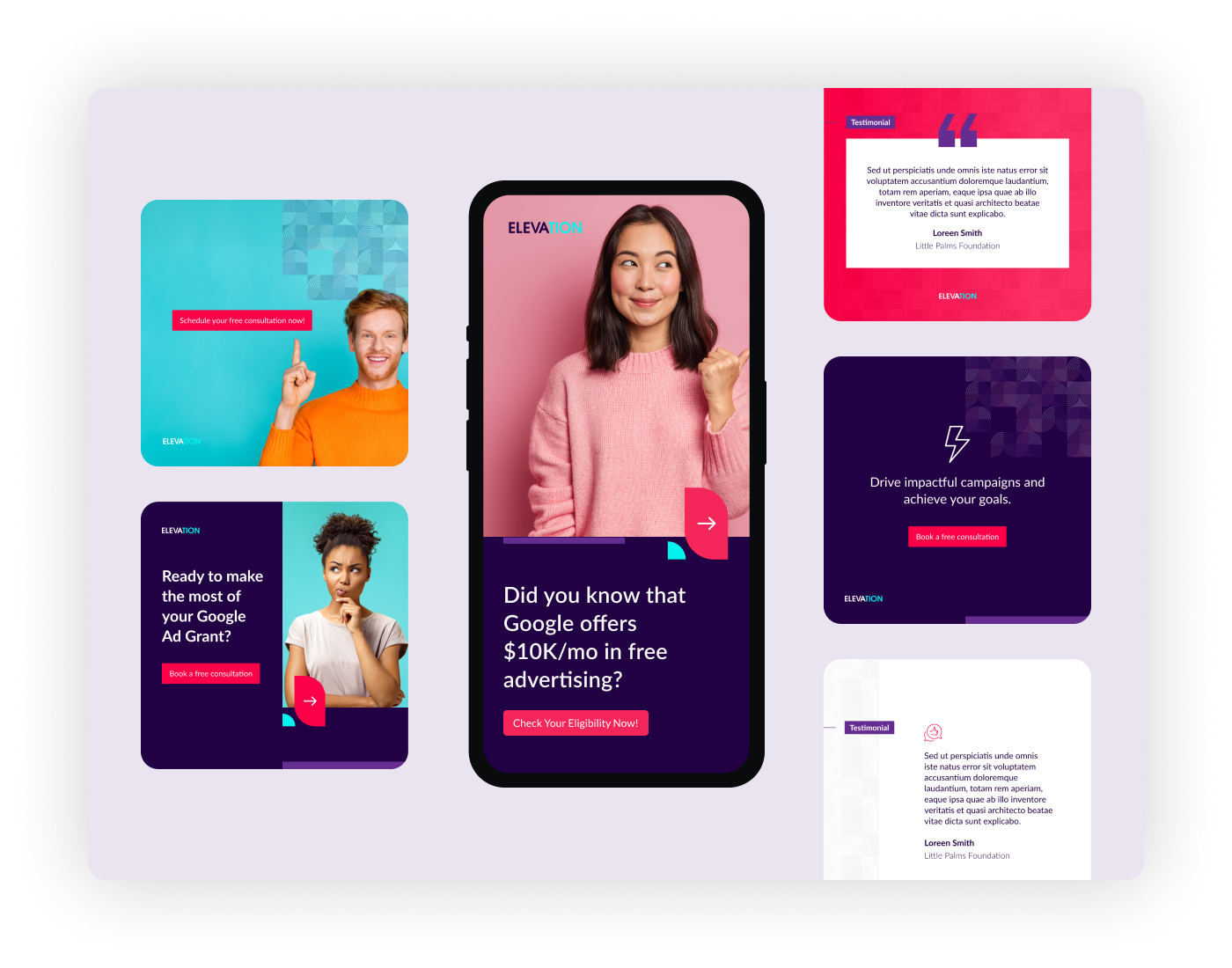Social media is a great way to engage a large audience without spending a lot. With just a little bit of creativity, your nonprofit can expand its audience reach by using social media as a promotional channel. However, it takes more than posting an image with a witty caption to create a nonprofit social media campaign.
Many nonprofits don’t consistently post on social media, and may be disheartened when, as a result, they see little to no engagement with their social media followers. If you’ve been left thinking, “Is this thing even on?,” try mastering these techniques first.
Before drafting a social media strategy for your nonprofit, begin by checking out what others are doing. Here’s a list of 23 nonprofit social media experts you should follow.
Then get to work following these 3 simple social media tips for your nonprofit:
1. How to use hashtags in your nonprofit social media strategy
To incorporate #hashtags into your social media campaigns, start with your time-sensitive initiatives. Many nonprofit social media campaigns leverage hashtags, such as #GivingTuesday and #EarthHour, to get the buzz going and create a sense of urgency around a timely campaign.
A trending #hashtag on social media can increase awareness and donations—sometimes breaking annual fundraising records in a single day. Even some of the biggest campaigns generate a large percentage of their donations using trending hashtags on social media.
#GivingTuesday
Giving Tuesday takes place on the Tuesday after American Thanksgiving, but over 100 countries worldwide participate. It’s a great way to take advantage of an international, time-sensitive #hashtag campaign without having to start from scratch. Tap into your community or connect with similar organizations that participate in the trend to generate an audience of people who are more likely to donate.
Why it works:
The Michael J. Fox Foundation participates in #GivingTuesday, but also uses their own hashtags for that campaign. The foundation encourages its followers to hashtag #GivingTuesday on social media posts to showcase how others can participate in the foundation’s campaign.
Since #GivingTuesday is an online campaign, your followers on social media can easily find your page and take advantage of social feature buttons to participate. Creating posts, using participating hashtags, and changing profile pictures are easy ways for your audience to participate in a campaign and show their support.
#EarthHour
This initiative from the World Wide Fund for Nature demonstrates how social media campaigns can call on both individuals and businesses to support a time-sensitive campaign. The Earth Hour campaign asks people to switch off their lights for one hour to conserve energy and protest climate change. It is just one example of nonprofits using a Facebook call to action (CTA) to spark change and generate donations. For over 10 years the WWF has been using the hashtag #EarthHour, which has generated millions in donations and engaged their followers to take action against climate change.
Why it works:
Image from: https://www.opencolleges.edu.au/blog/2019/03/06/great-social-media-marketing-campaigns-you-can-learn-from/
WWF is a large nonprofit, but this strategy is still within a small organization’s reach. It’s possible to leverage the same social media features to take advantage of any time-sensitive campaign. Create a trending image for supporters to use as their Facebook profile photo leading up to your event. It’s a great strategy to raise awareness using individual voices and visuals rather than words.
Using Facebook to build connections with your audience is also a great way to interact on a personal level with your members and build their commitment to your organization’s mission.
In this example, setting a time limit of a single hour made it more compelling for individuals to participate in the global campaign while the clock was ticking.
How can you make Facebook work for your nonprofit? First, make sure your campaign is clearly communicated across all your social profiles, messaging, and images. Begin with a time-limited or time-sensitive campaign using a hashtag that people can repost. Elicit immediate action with your CTA and use words such as “now” or “hurry” to create urgency for engaging with your social media campaign. You might also add a countdown timer on your website so site visitors will also know to get in on the action.
2. Create a campaign video for your nonprofit
Nonprofits don’t need a huge budget to create videos. You can still use video to tell your story with only a modest budget or even no budget at all. Smartphones make it easy for anyone to record a decent quality video that is ideal for social media content and to edit it at almost no cost with inexpensive or free video editing software. This can be a great project for a student intern or a media-savvy volunteer. To make it more likely for your video to go viral, be sure to ask yourself during the planning stages, “What will compel people to share this content with their social circle?”
This video from Girl Effect brilliantly illustrates how to use 3 out of the top 4 powerful emotions for creating viral content: hope, surprise, and disgust. The video conveys hope that Girl Effect is addressing this issue, surprises the audience with the information that age 12 is such a crucial period in a girl’s life, and disgusts the viewer with young girls’ sexualization, the risk to their lives of being young mothers and sex workers, and the cycle of poverty.
why it works:
For nonprofits to create a compelling video, they need an emotional narrative and a clear storyline. If you can evoke sadness, joy, empowerment, or outrage, audiences across social media platforms will engage and share the video with their social circles.
The Girl Effect video outlines the core problem addressed by that organization. It raises awareness and educates the audience on the scope of the problem and how it can be solved.
If you want to bring awareness to a cause, your video needs to hit the emotional heartstrings of your nonprofit’s audience. Whether you are advocating for food security or animal welfare, the core message needs to be clear throughout the video and prompt an emotional response.
3. Prioritize which social media platforms your nonprofit uses
Knowing your audience is key to your communications strategy. Your audience should determine the right platforms for your nonprofit’s social media efforts. Different platforms cater to different types of content. Begin by choosing which platforms and networks best align with your audience, and build the content around them. This will help you structure the types of posts you create.
For example, Facebook allows you to create events where your membership and followers can sign up, as well as invite their own social circles. Pinterest and Instagram, however, only allow you to keep photo diaries.
why it works:
CURE Childhood Cancer uses Facebook Events to advertise their upcoming fundraisers with information about the date, time, location and details of their events. The Facebook Event links out to their own website, with ticket registration and an “Invite” button that visitors can use to share the event with friends.
This is a great example of letting your audience guide how you present content and organize your efforts. By making it as easy as possible for your audience, you’ll get the most traction out of your campaigns.
Now that you have a few examples of how your organization can use social media strategies to grow your reach and increase donations, are you ready to add them to a great marketing campaign for your nonprofit?






